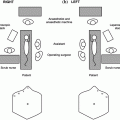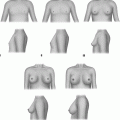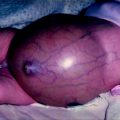Low risk (<20%)
Acute lymphoblastic leukaemia
Wilms’ tumour
Soft-tissue sarcoma, stage 1
Germ cell tumours (with gonadal preservation and no radiotherapy)
Retinoblastoma
Brain tumour: surgery only, cranial irradiation <24 Gy
Medium risk
Acute myeloblastic leukaemia (difficult to quantify)
Hepatoblastoma
Osteosarcoma
Ewing’s sarcoma: non-metastatic
Soft-tissue sarcoma, stage II or III
Neuroblastoma
Non-Hodgkin lymphoma
Hodgkin’s disease: alternating treatment
Brain tumour: craniospinal radiotherapy, cranial irradiation >24 Gy
High risk (>80%)
Whole body irradiation
Localized radiotherapy: pelvic or testicular
Chemotherapy conditioning for bone marrow transplantation
Hodgkin’s disease: treatment with alkylating drugs
Soft-tissue sarcoma, stage IV (metastatic)
Ewing’s sarcoma: metastatic
In our opinion, fertility preservation procedures should be offered in specialist centres to all patients at high risk of gonadal failure. However, the precise course of any patient is never completely predictable despite the best attempts to estimate prognosis prior to treatment. For example, in a series of 58 girls less than 16 years old, Jadoul et al. [22] showed that 14% initially received treatment that placed them at low- to medium risk of premature ovarian failure but later needed more aggressive gonadotoxic treatment in the months following cryopreservation. Patient selection for gonadal tissue cryopreservation is further complicated by the fact that new treatment protocols are emerging that may alter the risks of infertility.
Fertility preservation procedures may also be indicated in patients receiving gonadotoxic treatments for non-malignant conditions such as haematological or autoimmune diseases and also in patients with certain genetic conditions such as Fragile-X and Turner syndrome which predispose women to premature ovarian failure. Examples of these conditions are listed in Table 26.2. In addition, patients who have multiple operations for ovarian cysts or ovarian torsion may have decreased ovarian reserve [22] and are potential candidates for fertility preservation procedures.
Table 26.2
Benign diseases that may increase the risk of infertility by the need for treatment with cytotoxic agents or genetic factors
Haematological | Autoimmune | Genetic |
|---|---|---|
Sickle cell anaemia | SLE | Fragile-X |
Thalassaemia major | Wegener’s granulomatosis | Turner syndrome |
Aplastic anaemia | Behcet’s disease | Klinefelter syndrome |
Fertility Preservation Procedures in Males
Harvesting
Male gonadal tissue can be harvested by orchiectomy or testicular biopsy. Both procedures can be performed in children with a low risk of major surgical complications [23]. Due to the small size of testicles in young boys, harvesting a whole testis instead of partial orchiectomy is sometimes preferable [24].
Storage
Immature testicular tissue contains spermatogonial stem cells with reproductive potential, which can be stored in the form of cell suspensions or tissue fragments prepared from the harvested testicle or biopsy. Cell suspensions are prepared by disintegration of testicular tissue through enzymatic, chemical or mechanical digestion [25]. This approach has two advantages: it optimizes the cryopreservation procedure and allows the spermatogonial stem cells in suspension to be injected through the scrotal skin into the lumen of the rete testis. The drawback of this technique is that the disintegration of the testicular tissue decreases cell viability and breaks the inter-cellular microenvironment that is essential for cell differentiation and proliferation. In contrast, testicular tissue fragments maintain the spermatogonial stem cells and the surrounding cells in their original extracellular architecture. This preserves the stem cell niche that promotes renewal and differentiation through various signalling pathways [26, 27]. Moreover, testicular tissue fragments preserve Sertoli and Leydig cells that may restore hormonal production along with fertility functions [28].
To create viable tissue fragments the testicular tissue is dissected into millimetre size pieces and preserved with cryoprotective agents to protect the tissue from damage caused by ice formation. Dimethyl sulfoxide (DMSO) is superior to other cryoprotective agents, such as ethylene glycol, in terms of maintaining the architectural integrity of the tissue [23, 29]. Slow-programmed freezing that gradually decreases the temperature (0.5 °C/min) effectively preserves spermatogonial morphology and survival [23]. Then when the temperature reaches approximately −70 °C, the tissue can be plunged into liquid nitrogen at −196 °C for long-term storage.
Reimplantation
Successful testicular tissue transplantation has yet to be described in humans, however, in animal studies, spermatogonial survival has been demonstrated after xenotransplantation of human immature testicular tissue [30, 31]. Theoretically, autotransplantation of thawed, cryopreserved testicular tissue into the testis could be performed. Alternatively, spermatogonial stem cell suspensions could be introduced into the testis by ultrasound-guided injection into the rete testis, as described by Brook in a murine model [25]. Further optimization of cryopreservation protocols and the development of improved transplantation techniques are needed prior to the method becoming standard treatment in humans [32].
Fertility Preservation Procedures in Females
Harvesting
Oophorectomy can be performed or ovarian tissue biopsies can be collected, either at an elective laparoscopic procedure or during a laparotomy performed for other purposes. Laparoscopic ovarian procedures appear to be safe and feasible in children [33] and offer a minimally invasive approach with a low complication rate [34]. The emerging technique of single port-laparoscopy may improve patient safety further [35]. It is important to avoid using electrocoagulation on the ovarian surface so that cortical tissue that contains follicles is preserved. In the future, laparoscopic harvesting of the whole ovary including its vascular pedicle may be performed with the prospect of subsequent microvascular anastomoses of the ovarian vessels [36, 37]. When harvesting the ovary for whole ovary transplantation it is important to resect the full length of the infundibulo-pelvic ligament, as it is crucial for the cryopreservation and transplantation procedures.
The special anaesthetic challenges of paediatric surgery must be taken into consideration [38, 39] and the haematological, infectious and metabolic status of the patient assessed to fully evaluate the operative risk. Currently, there are no clear guidelines regarding the appropriate age to harvest ovarian tissue. Weintraub et al. [17] suggested that harvesting should not be performed in girls under the age of three because of anaesthetic considerations. However, Poirot et al. [40] reported a large series of paediatric patients who underwent ovarian tissue harvesting and 13 of 47 were younger than 3 years old with the youngest being only 10 months old at the time of the surgery. If possible, it is advisable to combine ovarian tissue harvesting with other imaging or surgical procedures that require anaesthesia, such as bone marrow aspiration, lumbar puncture or central line insertion [17].
Storage
After harvesting, ovarian tissue is promptly delivered to the laboratory. Aspiration of any follicles present should be performed before cryopreserving ovarian tissue since immature oocytes obtained from premenarchal girls can be matured in vitro and cryopreserved for future fertilization [41].
Ovarian tissue is traditionally cryopreserved using a “slow freezing” method [42]. First, ovarian cortex is separated from the medulla. The cortex is then dissected into small fragments, to maximize permeation of into the cells. The cryoprotective agents are necessary to protect the oocyte and surrounding stromal cells from freezing injuries [43]. The exact composition of the cryoprotective solution and the freezing protocol vary between institutions [44, 45]. Most commonly, the solutions contain permeating cryoprotectants such as DMSO, 1,2-propanediol or ethylene glycol, in combination with non-permeating substances such as sucrose and human serum albumin. Tubes containing immersed ovarian tissue fragments are gradually cooled by a programmable freezer that allows slow and stepwise decreases in temperature. When the temperature reaches −140 °C, the tubes can be plunged into liquid nitrogen at −196 °C for storage.
A recent and promising technique for cryopreservation of ovarian tissue is “rapid freezing” or vitrification. Small ovarian cortical fragments are immersed for a short period in a highly concentrated cryoprotective solution. Then, without a slow cooling delay, the ovarian tissue is plunged directly into liquid nitrogen. This induces a glass-like state that avoids the formation of ice crystals, which may harm the oocyte and stromal cells. The efficiency and safety of this technique still needs to be fully investigated before it becomes standard practice, however, it has been suggested that vitrification is superior to slow freezing in terms of follicular survival and tissue preservation in general [46, 47]. Others have reported that conventional freezing is a more suitable method for ovarian tissue cryopreservation than vitrification [48, 49]. Currently, new vitrification protocols are being developed that may achieve better results [50].
Cryopreservation of an intact ovary is challenging because cryoprotective agents cannot penetrate all cells equally. The vascular pedicle of the ovary must be harvested and carefully dissected to avoid damaging the ovarian vessels. The ovarian artery is usually perfused, via a catheter, with a heparinized physiological solution that flushes all the blood from the ovary. Thereafter, the ovary is perfused by, and immersed in, a cryoprotective solution followed by a cooling process, using a slow freezing protocol, as described above [36].
Reimplantation
The preserved ovarian tissue can be autotransplanted back into the patient once she is well enough. The autotransplantation can be either orthotopic (in the normal ovarian position) or heterotopic (at another anatomic site). Regardless of the site, the ovarian tissue fragments are sutured directly to the recipient site without any vascular anastomosis. Orthotopic transplantation is performed at laparoscopy [51] or laparotomy [52] by suturing the fragments into or onto the remaining ovary or ovarian stump, or by transplanting the tissue into a peritoneal pocket created by the surgeon in the broad ligament or pelvic peritoneum of the ovarian fossa. In the presence of intact and patent fallopian tubes, spontaneous conception has been reported after orthotopic transplantation [51]. Alternatively, oocytes can be aspirated from the transplanted tissue for IVF [53]. All live births that have resulted from ovarian tissue transplantation have arisen from orthotopic sites.
Heterotopic transplantation is placement of the ovarian fragments at any site in the body other than the ovary or the adjacent peritoneum, for example, in the subcutaneous space of the forearm or in the abdominal wall [54, 55]. Other sites that have been proposed include the uterus, the rectus abdominis muscle, and the space between the breast and superficial fascia of the pectoralis muscle [56]. Clearly, spontaneous conception is impossible at such sites, and IVF treatment is required. The advantages of using heterotopic sites are that the transplantation procedure is easier and the oocytes are more accessible for aspiration during IVF treatment. However, no clinical pregnancies have been achieved from heterotopic sites even though ovarian function has been restored [55].
The intact, whole ovary can be transplanted by microsurgical anastomosis of the ovarian vessels to vessels at orthotopic or heterotopic site. Although successful transplantation of a frozen-thawed whole ovary has not yet been described in humans, encouraging data from sheep have been reported [57]. In humans, a successful pregnancy was achieved following a microsurgical anastomosis of an intact fresh ovary [37]. Several sites for heterotopic transplantation have been proposed, including the deep inferior epigastric and the deep circumflex iliac vascular pedicles [58]. The optimal site for whole ovary transplantation remains to be determined.
Complications
The biggest drawback to ovarian tissue transplantation, carried out without a vascular anastomosis, is that the graft may not survive. In the immediate period after transplantation there may be ischaemic damage to the tissue, resulting in massive follicular death; however, most primordial follicles survive this ischaemic insult [43, 59]. Surgical manipulations have been described to encourage prompt neovascularization of the transplanted tissue by performing a two-step procedure. The first step involves creating a bed of granulation tissue one week before orthotopic transplantation. This two-step procedure is believed to decrease the ischaemic damage [51].
Transplantation of a whole ovary with its vascular pedicle clearly avoids the ischemia associated with the time for neovascularization as immediate reperfusion of the ovary should occur with reanastomosis of the arterial inflow. In sheep, hormonal function is reported to have continued for 6 years following transplantation of whole ovaries [60].
The only other major risk of transplantation is the possibility of seeding malignant cells by reintroducing ovarian tissue containing micro-metastases, as recently shown through quantitative reverse-transcribed polymerase chain reaction (RT-PCR) studies. In cryopreserved ovarian tissue from leukaemia patients, RT-PCR and long-term xenotransplantation detected malignant cells, which had been missed histologically [61]. For this reason, molecular studies are recommended prior to transplanting the tissue; long-term follow-up is also advisable to monitor for disease recurrence.
Follow-Up
Ovarian activity usually returns approximately 4 months after transplantation [62]. This period corresponds to the time it takes for primordial follicles, which are the ones that principally survive freezing and the insult of transplantation, to mature into antral follicles. Ovarian activity is confirmed by tracking follicular development with ultrasound, detecting ovulation and measuring circulating sex hormones.
Outcomes of Fertility Preservation Procedures
Outcomes of Fertility Preservation Procedures in Males
Successful transplantation of testicular tissue has not yet been described in humans.
Outcomes of Fertility Preservation Procedures in Females
Successful transplantation of ovarian tissue has not yet been described in paediatric patients, mainly because the cryopreservation and transplantation techniques are relatively new. However, we can assume that significant numbers of patients will undergo transplantation in the near future given that harvesting and cryopreservation of ovarian tissue has been performed in children for more than a decade. In adults, 14 healthy babies have been born after autotransplantation of cryopreserved ovarian tissue [62, 63]. These results suggest that the harvesting, cryopreservation, storage and transplantation procedures are both feasible and safe. Ovarian tissue in children is rich in primordial follicles that appear to survive the cryopreservation and transplantation insults well. The tissue harvested from young children is therefore expected to yield good results after transplantation.
Stay updated, free articles. Join our Telegram channel

Full access? Get Clinical Tree






